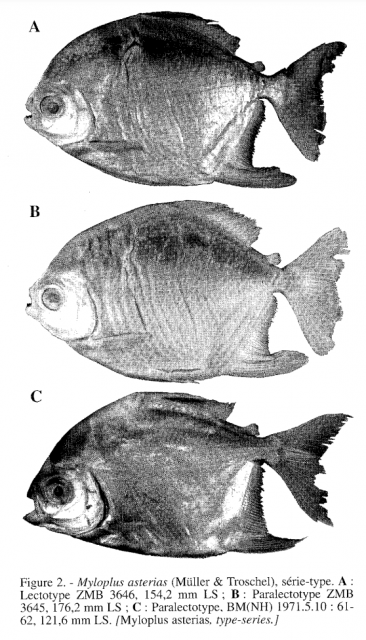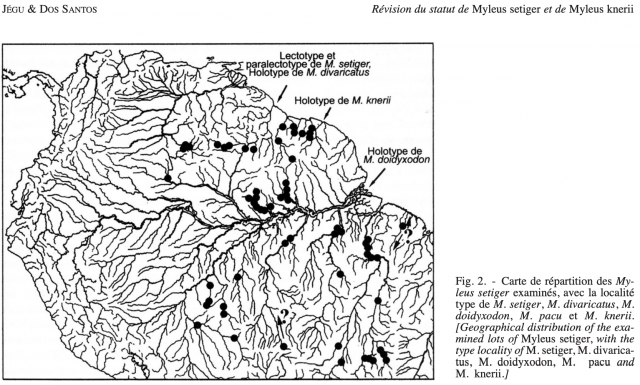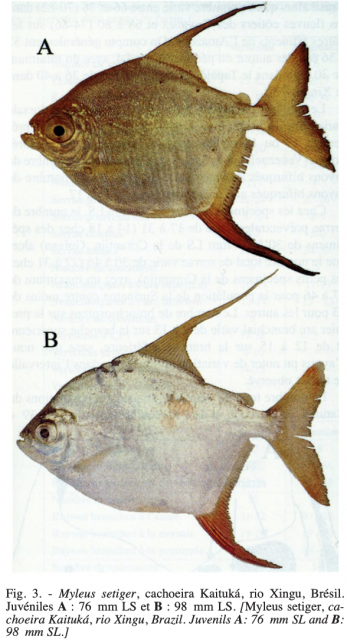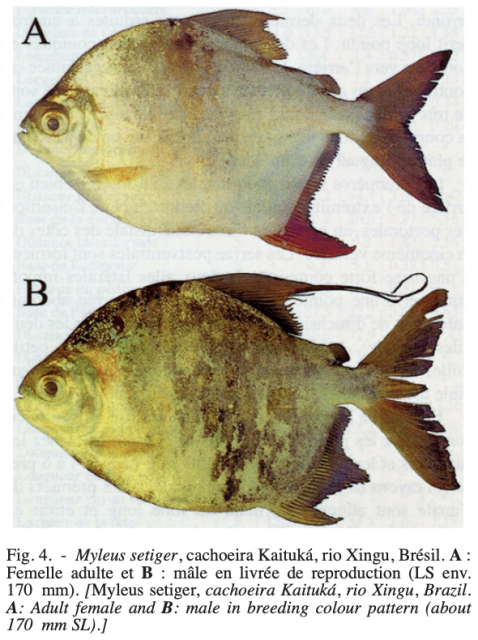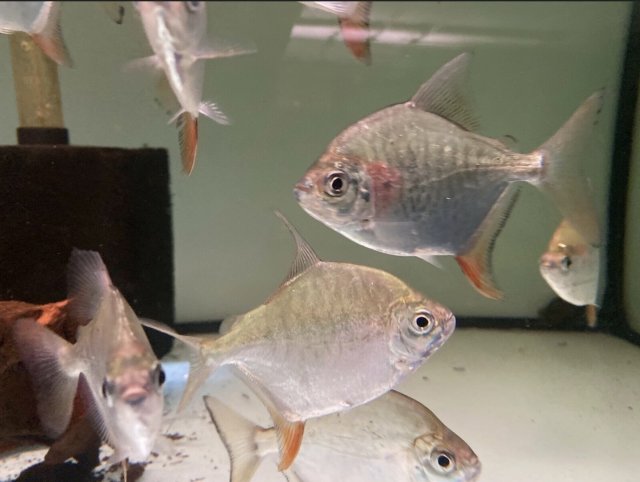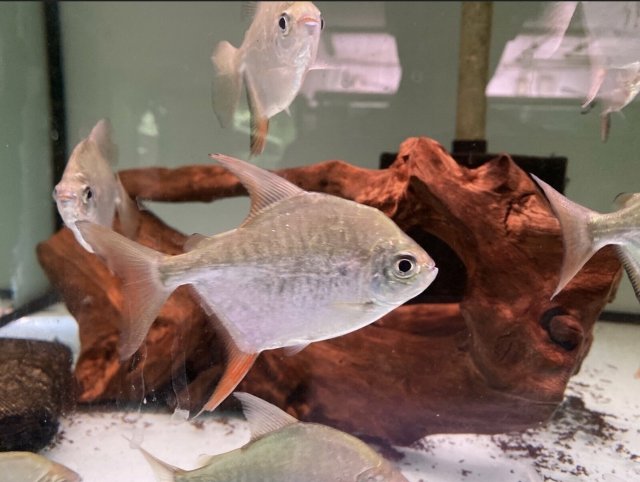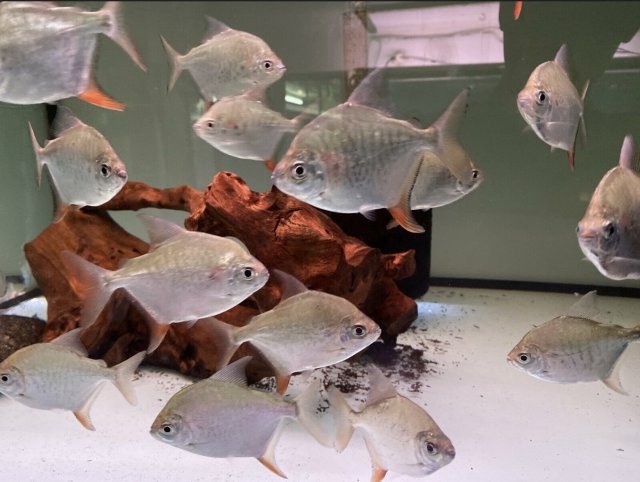Hey,
now that's an impressive in depth analysis.
Thank you so much for taking the time to write down such an informative post!
But one thing is not clear to me:
FRom what I know M.asterias almost looks identical to M.rubripinnis, M.ternetzi and M.torquatus but the juveniles of both species look very different to the ones being sold as Tometes/Mylesinus right now.
For example these fish do look like what's also knows as Myleus rubripinnis "luna":
This specimen which was supposed to be a juvenile M.asterias sure looks similar but it is lacking the striping and red coloration:
I still do think that M.setiger is more plausible than M.asterias (if the pictures found of M.asterias really are showing this species).
One option could be that the importer was screwed over and those fish are all captive bred specimen from Asia which would open up the possibility of these fish being hybrids.
now that's an impressive in depth analysis.
Thank you so much for taking the time to write down such an informative post!
But one thing is not clear to me:
FRom what I know M.asterias almost looks identical to M.rubripinnis, M.ternetzi and M.torquatus but the juveniles of both species look very different to the ones being sold as Tometes/Mylesinus right now.
For example these fish do look like what's also knows as Myleus rubripinnis "luna":
This specimen which was supposed to be a juvenile M.asterias sure looks similar but it is lacking the striping and red coloration:
I still do think that M.setiger is more plausible than M.asterias (if the pictures found of M.asterias really are showing this species).
One option could be that the importer was screwed over and those fish are all captive bred specimen from Asia which would open up the possibility of these fish being hybrids.
Last edited:




